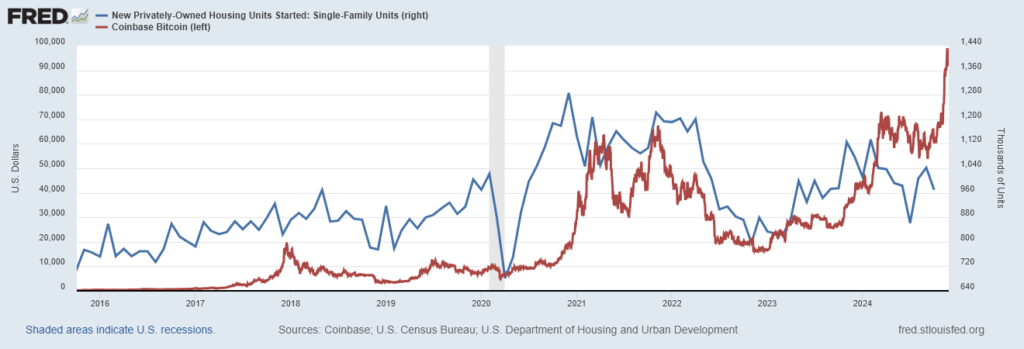Low-income households in the USA are turning crypto income into homeownership alternatives, a November 26 report from the Workplace of Monetary Analysis (OFR), a analysis service, revealed from the US Treasury Division.
Samuel Hughes, Francisco Ilabaca, Jacob Lockwood and Kevin Zhao performed the examine utilizing tax information. It provides essential perception into how crypto shapes monetary behaviors in economically weak communities.
Mortgage and auto debt
The report famous the rise in “excessive crypto” areas, outlined as ZIP codes the place greater than 6% of households reported having crypto holdings on their tax returns. These areas have seen a big improve in mortgage and auto lending exercise, coinciding with substantial beneficial properties within the crypto market.
In these crypto-heavy areas, low-income households noticed a pointy improve in mortgage exercise between 2020 and 2024. The variety of shoppers with mortgages elevated by greater than 250%, whereas common mortgage balances are elevated from $172,000 in 2020 to $443,000 in 2024, a rise of greater than 150%.
These figures counsel that crypto bargains have allowed many households to acquire bigger loans and enter the true property market.
The report acknowledged:
“For low-income households, common mortgage debt balances and mortgage holding charges have elevated sharply in zip codes with excessive crypto publicity. This means that low-income households can use crypto beneficial properties to take out new and take out bigger mortgages.
The report additionally highlights auto lending traits in these areas. Amongst low-income households, auto mortgage balances grew most sharply in crypto-heavy areas. Apparently, whereas delinquency charges elevated in low and medium cryptocurrency zip codes, they decreased in excessive cryptocurrency areas. This development means that crypto revenue may assist some households handle their auto mortgage funds extra effectively.
Because the 2008 banking disaster, which led to quite a few defaults, single-family residence possession has by no means recovered. Nonetheless, for the reason that creation of Bitcoin in 2009, the numbers have continued to extend. Whereas correlation will not be indicative of causation, it’s fascinating to notice that the 2021 surge and subsequent bear market in 2022 additionally noticed rises and falls within the variety of new single-family properties.

Dangers
Regardless of these optimistic traits, researchers warn of potential dangers from rising debt and indebtedness amongst low-income households with excessive crypto publicity.
Though delinquencies stay low total, an financial downturn or crypto market collapse may result in monetary instability. The focus of exposures to systemically essential establishments may amplify these dangers.
The researchers concluded:
“An essential takeaway for future monitoring is the rise in debt balances and leverage amongst low-income households uncovered to crypto. The rising misery of this group may trigger future monetary stress, particularly if publicity to these kind of extremely leveraged, high-risk shoppers is concentrated in systemically essential establishments.
